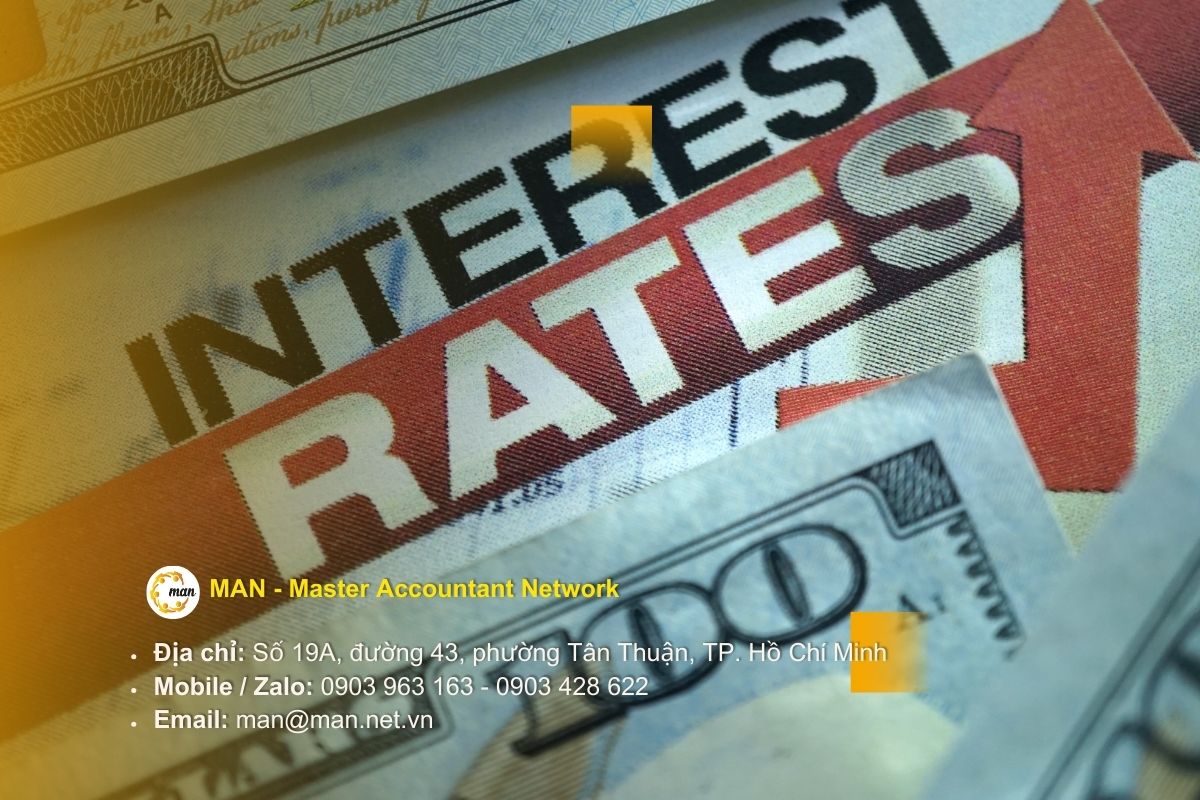Decree 132/2020/ND-CP was issued to replace old regulations, laying the foundation for a transparent tax management mechanism, especially for enterprises with related-party transactions. Decree 132/2020/ND-CP is not only a legal tool to limit transfer pricing and budget loss, but also a step forward in approaching international standards on tax management. However, implementation practice shows that there are still problems, especially regulations on controlling loan interest expenses and the obligation to declare information on related-party transactions. Therefore, reviewing and adjusting Decree 132/2020/ND-CP becomes an urgent requirement in 2025 to both protect national interests and support the business community to develop sustainably.
Introducing Decree 132/2020/ND-CP
Decree 132/2020/ND-CP of the Government regulating tax management for enterprises related party transactions. Decree 132/2020/ND-CP was issued to update and perfect the legal framework for controlling transfer pricing in Vietnam towards approaching international standards. (BEPS/OECD), increasing transparency, tax fairness and limiting tax base erosion. Decree 132/2020/ND-CP replaces previous regulations (such as Decree 20/2017/ND-CP, supplemented by Decree 68/2020/ND-CP).
See also: Decree 68/2020/ND-CP
Adjustment target
The central objective of Decree 132/2020/ND-CP is to establish a clear and comprehensive legal framework for the management of transfer pricing. First of all, Decree 132/2020/ND-CP requires that the determination of transaction prices must be based on economic substance rather than just legal form, ensuring that related-party transactions are fairly compared with independent transactions.
In addition, enterprises are obliged to declare and store price determination records at three levels including global records (Master file), national records (Local file) and cross-country profit reporting (CbCR), in accordance with OECD recommendations. Another notable point is the regulation on the limit on deductibility of interest expenses, calculated based on the same indicator as EBITDA, to prevent capital shortages, the excess expenses are allowed to be transferred to the next tax periods, and there are exceptions to ensure fair policies. Finally, the decree also strengthens the authority and tools for tax authorities in risk analysis, tax assessment and inspection, and encourages enterprises to apply the APA mechanism (advance pricing agreement) to limit disputes and improve stability in tax compliance.
Scope and subjects of application of Decree 132/2020/ND-CP
Scope of Decree 132/2020/ND-CP
Decree 132/2020/ND-CP provides comprehensive regulations on tax management for enterprises. affiliate transactions. The content covers from the principles of determining prices in transactions, the obligation to declare and keep records of price determination, to the responsibility to provide cross-border profit reports. At the same time, the decree also sets out a mechanism to control interest expenses and how to handle excess amounts, as well as clearly defines the powers and responsibilities of tax authorities in inspection, examination and tax assessment.
Subjects of application of Decree 132/2020/ND-CP
According to regulations, Decree 132/2020/ND-CP applies to:
| Regulations | Object |
Decree 132/2020/ND-CP | Production and business organizations in Vietnam that have transactions with related parties. Can be domestic enterprises or foreign-invested enterprises (FDI). |
| Domestic enterprises owning 25% or more of capital contributions from other enterprises. | |
| An enterprise that is controlled, operated, or financially dependent on another party. | |
| Enterprises are also subject to the control of a third party (e.g., parent company, corporation). | |
| In case of borrowing capital, financial guarantees, and sharing of administrative resources exceeding the prescribed threshold |
The implementation of Decree 132/2020/ND-CP brings many practical benefits. For tax authorities, this is the basis for accurately determining tax obligations and limiting budget losses. For businesses, Decree 132/2020/ND-CP both sets out transparency requirements and creates a clear legal corridor, helping them to be more proactive in building tax management strategies.
Definition of affiliated relationship Decree 132/2020/ND-CP
An affiliated relationship pursuant to Article 5 of Decree 132/2020/ND-CP is a relationship in which one party directly or indirectly participates in the management, control, capital contribution or investment in the other party, or both parties are subject to the management, control or capital contribution of a third party. The provisions of Decree 132/2020/ND-CP are the basis for identifying affiliated transactions and applying the market price principle.
The following are the most specific and common cases, illustrating each type of related-party transaction arising under Decree 132/2020/ND-CP in business activities.
Common cases
Case 1: Capital ownership linkage
An enterprise is considered to be affiliated when one party holds (directly or indirectly) 25% of the other party's equity, or both parties have at least 25% of capital held by the same third party. In addition, if a shareholder is the largest shareholder and holds 10% of the enterprise's capital, an affiliated relationship is also formed. The 25% threshold is a consistent statutory threshold in Decree 132/2020/ND-CP.
Illustrative example: Two enterprises both have ≥25% of capital held by a third party
- Company C has a charter capital of 200 billion VND, in which Company E contributes 60 billion VND (accounting for 30%).
- Company D has a charter capital of 150 billion VND, in which Company E contributes 50 billion VND (accounting for 33.31 TP3T).
Although C and D do not directly contribute capital to each other, because they both have ≥25% of contributed capital owned by Company E, C and D have an affiliated relationship.
Case 2: Linking through sponsorship, loans, or guarantees
A lender or guarantor of a loan in any form so that the total outstanding debt between the two parties is at least 25% of the borrower's equity and at the same time accounts for more than 50% of the borrower's total outstanding medium and long-term debt is considered to be associated.
Example: Suppose Company G has equity of 100 billion VND and has total medium and long-term debt of 80 billion VND. Of which, Company H lends G 30 billion VND, the remaining 50 billion VND is a loan from Bank K.
When compared with the threshold prescribed in Decree 132/2020/ND-CP, the 30 billion loan from Company H accounts for 30% of G's equity (greater than 25%) and at the same time accounts for 37.5% of total medium and long-term debt. Because the loan meets both conditions, Company G and Company H are considered to have an affiliated relationship.
Case 3: Linking through personnel, decision-making power
If an enterprise appoints more than 50% members of the executive body, controls the other enterprise, or appoints a member with the right to decide on the financial policies and business operations of the other party, or both enterprises have more than 50% members of the executive body appointed by a third party, they are all affiliated. In addition, cases under actual management and control are also considered affiliated. From 2025, an enterprise's independent accounting branch will be clearly stated as an affiliated party of that enterprise itself.
Example: Company M has a Board of Directors of 5 members. Of these, Company N directly appointed 3 people. The appointment ratio accounts for 60%, exceeding the threshold of 50% as prescribed in Decree 132/2020/ND-CP, so M and N are determined to have an affiliated relationship.
Case 4: Linked through family relationships
Two businesses are considered affiliated if they are operated/controlled by individuals with close relationships. The goal is to prevent conflicts of interest and non-independent transactions due to personal influence.
Example: Company X has a charter capital of 100 billion VND, in which Mr. Nguyen Van A owns 40% shares and holds the position of General Director.
Company Y has a charter capital of 80 billion VND, Ms. Tran Thi B (Mr. A's wife) owns 35% shares and is also the Chairwoman of the Board of Directors.
Because Mr. A and Mrs. B have a marital relationship that falls under the group of close relationships clearly stipulated in Decree 132/2020/ND-CP and Decree 20/2025/ND-CP, Company X and Company Y are considered affiliated enterprises.
Case 5: Link controlled by an individual
Enterprises are considered affiliated if they are controlled by the same individual through capital contribution or direct participation in management.
Example: Mr. Pham Van C is an individual investor:
- At Company M (charter capital of 120 billion VND), Mr. C contributed 48 billion VND, accounting for 40% of capital and held the position of Chairman of the Board of Directors.
- At Company N (charter capital of 60 billion VND), Mr. C contributed 18 billion VND, accounting for 30% of capital and is also the Executive Director.
Thus, although Company M and Company N do not directly cross-own capital with each other, both are under the actual control of Mr. C through the capital contribution ratio (≥25%) and the right to manage and decide on financial and business policies in both enterprises.
Case 6: Links arising during the period due to transactions with managers and controlling shareholders
When, in a tax period, an enterprise and an individual holding an executive position or controlling power (or their relatives) transfer or receive capital equivalent to 25% of equity, or borrow or lend at least 10% of equity at the time of the transaction, they are also considered to be associated in that period.
After clearly understanding the concept of linkage and the scope of application of Decree 132/2020/ND-CP, an important content that businesses need to pay special attention to is the regulation on controlling loan interest expenses. This is considered a key point because it directly affects the ability to account for costs, optimize taxes and manage the financial management of the business.
Regulations on controlling interest expenses (30%) Decree 132/2020/ND-CP
Legal basis Clause 3, Article 16 Decree 132/2020 The total interest expense deductible when determining taxable income of an enterprise with related-party transactions does not exceed 30% of a standard indicator (equivalent to EBITDA according to the calculation method of the decree). Decree 132/2020/ND-CP also clearly states that deposit interest and loan interest (if any) must be deducted before comparing with the 30% threshold.

“(1) Total interest expense after deducting deposit interest and loan interest arising during the period of the taxpayer that is deductible when determining taxable income for corporate income tax shall not exceed 30% of total net profit from business activities during the period plus interest expense after deducting deposit interest and loan interest arising during the period plus depreciation expense arising during the period of the taxpayer.
(2) The non-deductible interest expense portion under point (1) shall be transferred to the next tax period when determining the total deductible interest expense in case the total deductible interest expense incurred in the next tax period is lower than the level specified in point (1). The period for transferring the interest expense continuously shall not exceed 05 years from the year following the year in which the non-deductible interest expense arises;
(3) The provisions in Point (1) do not apply to loans of taxpayers that are credit institutions according to Law on Credit Institutions 2010 insurance business organizations in accordance with the provisions of the law on insurance business; official development assistance (ODA) loans, preferential loans of the Government implemented in the form of the Government borrowing from abroad to lend to enterprises; loans to implement national target programs (new rural areas and sustainable poverty reduction programs), investment loans for programs and projects implementing the State's social welfare policies (resettlement housing, housing for workers, students, social housing and other public welfare projects),
(4) Taxpayers declare the interest expense ratio in the tax period according to Appendix I issued herewith. Decree 132/2020/ND-CP"
References: Law Library
Decree 132/2020/ND-CP on the mechanism for transferring non-deductible interest expenses
Decree 132/2020/ND-CP stipulates that the portion of interest expense excluded from deductible expenses in a period due to exceeding the ceiling is not immediately deleted. This portion is allowed to be transferred to the following tax periods to be recorded as deductible expenses when the following periods meet the conditions (i.e. when in the next period the total deductible interest expense is lower than 30%×EBITDA of that period). The continuous transfer period is not more than 5 years from the year following the year in which the non-deductible interest expense arises.
Exemptions (not subject to 30% control)
Decree 132/2020/ND-CP provides exceptions, i.e. loans and entities that do not fall under the 30% rule mentioned above. Common cases, according to Decree 132/2020/ND-CP, include:
- Loans of taxpayers are credit institutions (according to the Law on Credit Institutions) or insurance business organizations (according to the Law on Insurance Business).
- Official development assistance (ODA) loans and preferential loans under the mechanism of the Government borrowing from abroad and then lending to enterprises.
- Preferential loans, capital of national target programs (for example: new rural programs, sustainable poverty reduction).
- Loans to invest in programs/projects implementing the State's social welfare policies, for example: resettlement housing, worker housing, student housing, social housing and other public welfare projects.
Country-by-Country Reporting (CbCR)

CbCR is a group-level report that reflects the distribution of revenue, profit, tax and some key performance indicators (number of employees, tangible assets, etc.) by each country where the group operates. The objective of the report is to provide tax authorities with a global picture of the group to serve the assessment of transfer pricing risks, BEPS and support information exchange between tax authorities on the basis of OECD standards.
Time to submit cross-border profit report when parent company is in Vietnam
Decree 132/2020/ND-CP: If the taxpayer is a parent company located in Vietnam and has a total consolidated global revenue in the tax period of VND 18,000 billion or more, the enterprise is obliged to prepare a Country-by-Country Profit Report. This report must be submitted to the Vietnamese tax authority within a maximum period of 12 months from the end of the fiscal year of the parent company.
When to file cross-border profit reports when the parent company is abroad
Decree 132/2020/ND-CP stipulates the time for submitting profit reports when the parent company is abroad, divided into the following 2 cases:
Case 1: It is not mandatory to submit to the Vietnamese tax authorities in case the Vietnamese tax authorities can receive the country-by-country profit report through the automatic exchange of information (AEOI) mechanism.
Case 2: Must be paid if the following conditions apply:
- The country or territory where the ultimate parent company is a resident has an international tax agreement with Vietnam but does not have an agreement from the competent authority at the time of the deadline for submitting the Report.
- The country or territory where the ultimate parent company is a resident has an agreement between the competent authorities and Vietnam but has suspended the automatic information exchange mechanism or cannot automatically provide it to Vietnam.
- In case a foreign corporation has more than 01 subsidiary in Vietnam. The ultimate parent company must notify the Vietnamese tax authority in writing about the subsidiary designated by the ultimate parent company to submit the Country-by-Country Report to the Vietnamese tax authority on behalf of the ultimate parent company.
Legal consequences of non-compliance
Failure to submit or late submission of appendices and reports as prescribed may be subject to administrative penalties, specifically as follows:

“Warning penalty for tax declaration submission after the deadline from 01 day to 05 days with mitigating circumstances.
A fine of VND 2,000,000 to VND 5,000,000 shall be imposed for submitting tax declaration dossiers 01 to 30 days past the deadline, except for the case specified in Clause 1 of this Article.
Fines from VND 5,000,000 to VND 8,000,000 for submitting tax declarations 31 to 60 days past the prescribed deadline.
A fine of from VND 8,000,000 to VND 15,000,000 shall be imposed for one of the following acts:
a) Submitting tax declaration dossiers 61 to 90 days past the prescribed deadline;
b) Submitting tax declaration dossiers 91 days or more after the prescribed deadline but no tax payable arises;
c) Not submitting tax declaration but no tax payable arises;
d) Failure to submit appendices as prescribed on tax management for enterprises with related transactions attached to corporate income tax settlement dossiers."
References: Law Library
Decree 132/2020/ND-CP is not only a legal document, but also an important framework that shapes the way taxes are managed for related-party transactions in Vietnam. Regulations on declaration, control of interest expenses, or the obligation to prepare cross-border profit reports all aim at transparency, fairness and preventing budget losses.
Conclude
Decree 132/2020/ND-CP is an important legal framework in tax management for related-party transactions, helping to prevent transfer pricing and ensure fairness among businesses. Decree 132/2020/ND-CP not only enhances transparency but also creates a safe corridor for businesses to build effective tax management strategies. In the context of international integration, compliance with Decree 132/2020/ND-CP is the key for businesses to develop sustainably and limit legal risks.
For specific advice, businesses please contact MAN – Master Accountant Network.
Contact information MAN – Master Accountant Network
- Address: No. 19A, Street 43, Binh Thuan Ward, District 7, Ho Chi Minh City.
- Mobile/zalo:+84 (0) 903 963 163 or +84 (0) 903 428 622
- Email: man@man.net.vn
Editorial Board: MAN – Master Accountant Network




